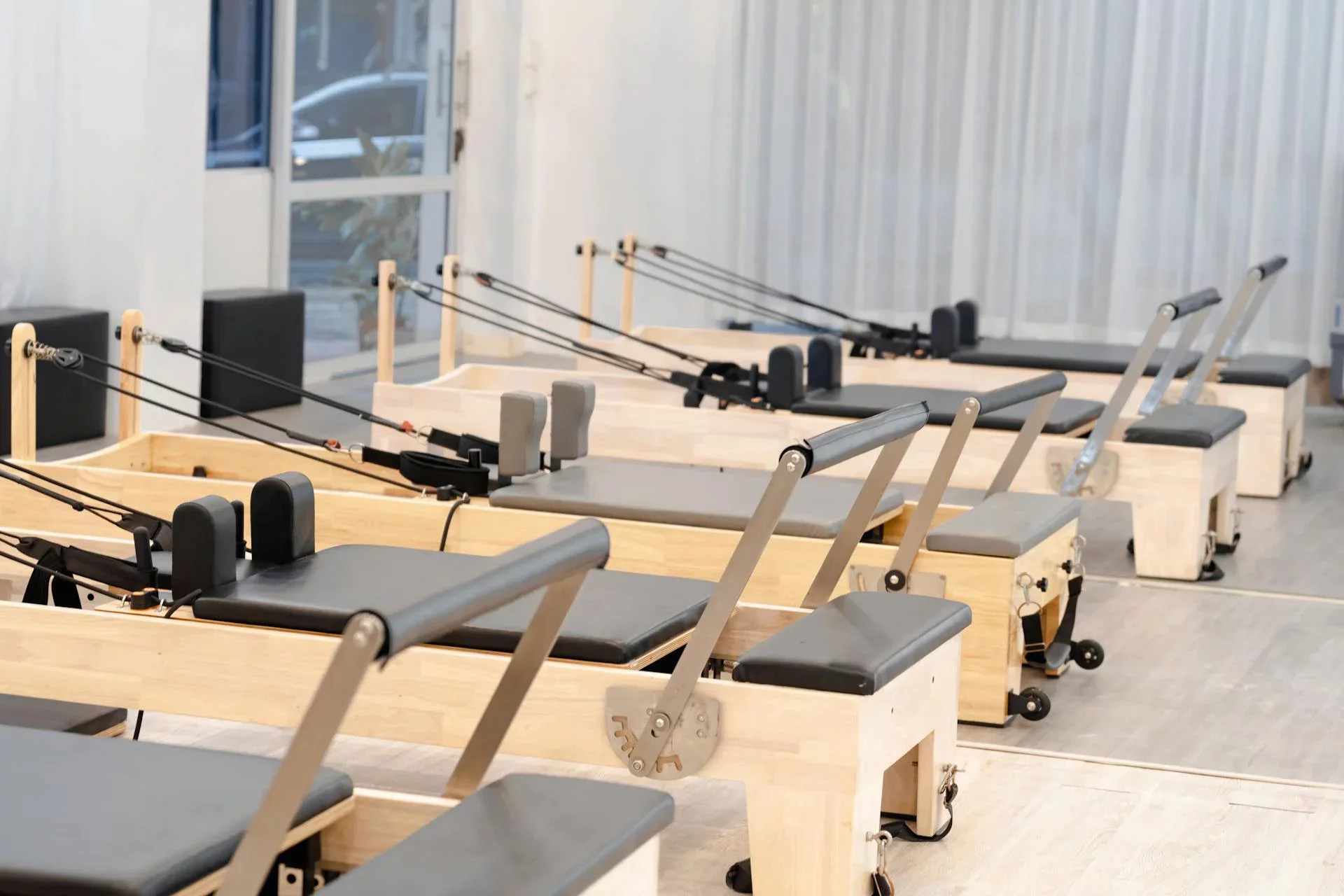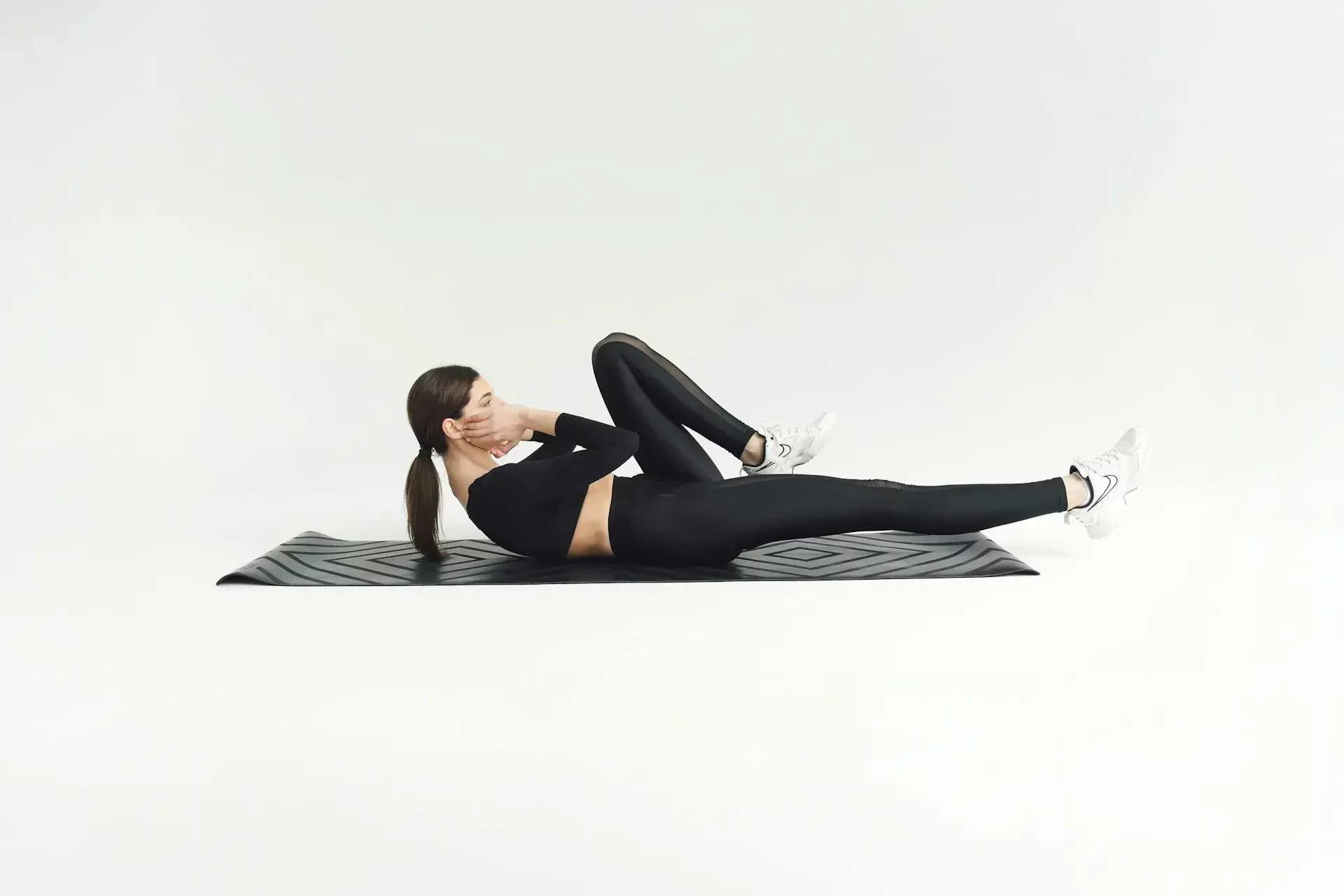Opening a Pilates studio is an exciting venture. It combines passion for fitness with entrepreneurship. But how much does it cost to open a Pilates studio?
Understanding the financial commitment is crucial. Costs can vary widely based on several factors. Location, size, and equipment are key considerations.
Initial expenses include leasing or buying a space. Renovations and interior design also add to the budget. Essential equipment like reformers and mats are necessary investments.
Marketing and branding are vital for attracting clients. A strong launch can set the tone for success. Ongoing costs like utilities and salaries must be planned for.
Potential earnings can be substantial. Pilates studio owners can make a good income. However, careful planning and management are essential.
This guide will explore all these aspects. It aims to provide a comprehensive overview. Let's dive into the details of opening a Pilates studio.
Understanding the Pilates Studio Business Model
The Pilates studio business model focuses on providing specialized fitness services. It caters to individuals seeking strength, flexibility, and wellness. This tailored approach attracts diverse clients from various backgrounds.
Pilates studios typically offer group classes, private sessions, and workshops. These varied options appeal to different client preferences and budgets. Offering a mix of classes can enhance revenue opportunities.
A crucial aspect of the business model is membership and pricing strategies. Studios can offer drop-in rates, class packages, or monthly memberships. Flexibility in pricing plans can attract and retain clients.
Creating a welcoming and inclusive environment is essential. This helps in building a loyal client base. Happy clients often lead to positive word-of-mouth referrals.
Understanding local competition and market demand is crucial. Analyze nearby studios to identify unique selling points. This knowledge helps in carving out a niche in the market.

Initial Costs: What You Need to Get Started
Opening a Pilates studio requires careful planning and budgeting. Initial costs can vary widely based on several factors. Key considerations include location, size, and equipment.
To begin, consider the cost of leasing or buying a space. This is usually one of the largest initial expenses. Location can significantly impact your overheads and clientele.
Next, factor in renovation and interior design expenses. A welcoming, professional environment is vital for attracting clients. Thoughtful design can also optimize the use of space.
Equipping your studio is another major investment. Essential Pilates apparatus can range in price. It's crucial to balance quality with cost.
In addition to physical setup, marketing efforts will require funding. Branding, advertising, and launch events help generate initial buzz.
Don’t forget to budget for legal, licensing, and insurance costs. These protect your business and ensure compliance with local regulations.
Finally, setting aside funds for unexpected expenses can safeguard your new venture. Initial investment planning lays the foundation for a successful studio.

Location: Rent vs. Buy
Deciding between renting or buying your studio space is a significant choice. Each option has its own set of benefits and drawbacks.
Renting may offer lower upfront costs. It provides flexibility, allowing for easier relocation if needed. However, rental agreements can change, potentially affecting long-term stability.
Buying a space requires a larger initial investment. It offers control over your property and long-term cost stability. Ownership also means building equity over time.
Weigh the pros and cons based on your financial situation. Consider the local real estate market and future plans for your studio.
A high-traffic location can enhance client visibility. It often comes with higher leasing or purchasing costs. Balance potential client flow with your budget constraints.
Evaluate the surrounding neighborhood. A vibrant community can support and grow your business. Carefully considering these elements can influence your studio’s success.
Renovations and Interior Design
Renovations and interior design play a crucial role in your studio’s appeal. A well-designed space can enhance client experiences and brand perception.
Start by assessing the current condition of your chosen location. Some spaces may require significant renovations. Others might need only cosmetic updates.
Consider an open, airy layout to encourage a relaxing atmosphere. Natural light and pleasant colors can enhance mood and motivation.
Furniture and decor choices should reflect your brand’s identity. Consistency in design helps create a cohesive and professional appearance.
Always plan your budget carefully. Allocate funds to critical areas such as flooring, lighting, and signage. An inviting space makes clients feel valued and welcome.

Essential Pilates Equipment and Furniture
Investing in quality Pilates equipment is fundamental for your studio. These tools are essential for providing effective classes.
The primary equipment includes reformers, mats, and towers. Additional apparatus like chairs and barrels can widen class offerings.
Balancing cost and quality is vital. Buying reputable brands can be a worthwhile investment in your studio’s reputation. Opt for durable, versatile pieces to maximize value.
Consider second-hand equipment as a cost-saving strategy. Ensure it’s in excellent condition to maintain client satisfaction.
Budget for a varied selection to cater to different skill levels and class styles. Properly arranged equipment optimizes space and improves class flow.
Remember, comfort and safety are priorities. High-quality mats and supportive props improve client experience.
Technology and Studio Management Software
Incorporating technology into your Pilates studio is essential. It streamlines operations and improves client management.
Studio management software is crucial. It simplifies booking, billing, and scheduling, enhancing client convenience.
Consider these features when choosing software:
User-friendly interface
Integrated payment processing
Client data security
Customizable reports
Besides management tools, explore virtual class options. Offering online sessions can broaden your reach and revenue.
Technology investments should align with your business goals. They boost efficiency and client engagement, paving the way for success.
Legal, Licensing, and Insurance Costs
Before opening a Pilates studio, it's crucial to address legal and licensing requirements. These steps ensure your business operates within the law.
Begin by checking local business regulations. You may need a business license and permits specific to fitness operations. Compliance helps avoid legal issues down the road.
Liability insurance is another key aspect. It protects you against potential accidents or injuries within your studio. This coverage is essential for your financial security.
Consider other insurance needs, such as property and equipment protection. Insurance policies can vary, so choose what's best for your circumstances.
Lastly, consult with legal professionals to review contracts and agreements. Their expertise can prevent misunderstandings and legal conflicts.
Staffing: Instructors and Support Team
Staffing is crucial for a successful Pilates studio. Hiring the right instructors and support team can enhance client satisfaction.
Instructors are the backbone of your business. Look for certified professionals with experience in teaching Pilates. Their expertise ensures quality sessions and happy clients.
Pay attention to personality as well. Friendly and motivated instructors can create a welcoming atmosphere, attracting more clients.
Determine how many instructors you need. Consider class sizes and your studio's operating hours when making this decision.
Apart from instructors, consider support staff roles. This includes front desk personnel and cleaning staff. They ensure smooth day-to-day operations.
Make sure to budget for competitive salaries and benefits. Attracting the best talent often requires offering attractive compensation.
Here's a checklist for staffing your studio:
Hire certified instructors with experience
Consider personality and fit with studio culture
Recruit support staff: front desk and cleaners
Budget for competitive pay and benefits
50% off for new studios
Schedule a call with our team to see how our software can streamline your fitness studio. We’ll help you set everything up and offer 50% off your first year for new studios—so you can focus on growing, not the admin.
Marketing, Branding, and Launch Expenses
Building a strong brand identity is essential for attracting and retaining clients. Your branding should reflect the core values of your Pilates studio.
Creating a logo and establishing a cohesive brand image should be among your first steps. It's crucial to invest in professional design work to achieve a polished look.
Effective marketing strategies go beyond just a catchy logo. Online presence is pivotal; consider an easy-to-navigate website and active social media profiles.
Developing a pre-launch marketing campaign can generate buzz. Use social media ads and local partnerships to spread the word.
Launching your studio involves more than opening the doors. Plan an unforgettable launch event to engage the community and offer free trial classes.
Allocate a budget for each marketing channel. This will help you track results and adjust strategies as necessary.
Here's a list of marketing essentials:
Design a professional logo and brand image
Build an engaging website and social media
Plan a pre-launch marketing campaign
Host a memorable launch event

Ongoing Operational Costs
Running a Pilates studio involves various ongoing costs that require careful planning. These expenses are vital for keeping your business afloat and thriving.
Utility bills, including water, electricity, and gas, are predictable monthly expenses. They may fluctuate depending on usage and location.
Staff salaries represent another major expense. Hiring certified instructors and support staff ensures a high-quality client experience.
Regular equipment maintenance is essential. Keeping apparatus in top condition prevents disruptions and ensures client safety.
Don't overlook marketing as a recurring cost. Continuous marketing keeps your studio in the spotlight and attracts new clients.
Here's a quick overview of ongoing operational costs:
Utility bills: water, electricity, gas
Staff salaries: instructors, support staff
Equipment maintenance and repairs
Marketing and promotional activities
Emergency Funds and Contingency Planning
Unexpected expenses are inevitable in any business, including Pilates studios. Preparing for unforeseen events with an emergency fund is crucial.
Experts recommend setting aside 10% to 20% of your monthly revenue. This reserve helps cover sudden repairs or unexpected market changes.
Contingency planning involves identifying potential risks. Create strategies to mitigate these risks and ensure smooth operations.
Here's how to prepare effectively:
Establish an emergency fund as a financial safety net
Allocate 10% to 20% of your revenue for emergencies
Develop contingency plans to tackle unexpected challenges
Being proactive and prepared will enhance your studio's resilience and stability. This foresight ensures that you're ready for any surprise that comes your way.
Franchise vs. Independent Studio: Cost Comparison
Choosing between a franchise and an independent Pilates studio is crucial. Each has its own cost implications and benefits.
Franchises offer brand recognition and built-in marketing support. However, they often come with higher upfront fees and ongoing royalty payments.
Independent studios provide flexibility in branding and operations. They usually have lower initial costs but require more effort in marketing and client acquisition.
Key financial considerations include:
Franchise fees and royalties
Brand support and marketing provided by franchises
Flexibility and creativity in independent studio branding
Franchises can reach customers more easily but may lack creative control. Independent studios require greater effort but offer full ownership benefits.
Understanding these distinctions helps make informed decisions. Weigh the pros and cons based on your goals and financial capabilities.
Real-World Examples: Cost Scenarios for Different Studio Types
Examining real-world scenarios can provide insight into the costs of different Pilates studio types. Let's consider urban, suburban, and home-based studios.
Urban studios generally incur higher rent due to prime locations. This results in costs soaring from $100,000 to $150,000. Despite the higher investment, urban studios often attract more clients due to high foot traffic.
In suburban areas, studios benefit from reduced rent. Start-up costs range from $70,000 to $100,000. While there is less foot traffic, dedicated local clientele can lead to steady income.
Home-based studios represent the most economical option. Initial setup can cost between $10,000 and $30,000. The main challenge is limited space, but they thrive on low overhead.
Each scenario presents:
Urban: High rent, high client potential
Suburban: Moderate costs, steady clientele
Home-based: Low cost, space limitations
Understanding these scenarios helps tailor investment strategies. Consider your local market, client base, and financial capacity before deciding.
How Much Do Pilates Studio Owners Make?
Pilates studio owners’ incomes vary widely, influenced by factors such as location, clientele, and pricing strategies. On average, owners can earn from $5,000 to $30,000 monthly.
A bustling urban studio might see higher earnings due to more clients and premium prices. In contrast, suburban studios may earn less but benefit from lower operating costs.
Factors affecting earnings include the number of classes offered and class sizes. Owners maximizing studio space and schedules often see greater revenue.
Membership options and pricing also play a role in profitability. Diverse offerings, like private lessons and workshops, can boost income.
Revenue streams typically include:
Group classes
Private sessions
Workshops and events
Merchandise sales
Understanding these income channels helps optimize financial success. Consistent marketing and strong client relationships further drive profitability.
How Much Does a Pilates Studio Make? Revenue Streams and Profitability
Pilates studios generate revenue through several streams. Each stream contributes differently to overall profitability depending on the business model and strategy.
Group classes remain a core income source, accommodating more clients in a single session. Pricing varies, but consistency is key to client retention.
Private classes often command higher fees, appealing to clients seeking personalized instruction. This tailored service can significantly boost studio revenue.
Diversification can improve profitability. Workshops, special events, and retreats provide additional income opportunities and attract different demographics.
Merchandise sales, including branded apparel and accessories, enhance profitability. Offering quality products can increase client loyalty and boost brand recognition.
Revenue streams include:
Group classes
Private lessons
Workshops and events
Merchandise sales
Effective management of these elements ensures financial stability. Creativity in programming and marketing can lead to greater profitability.
Cost-Saving Tips and Strategies
Opening a Pilates studio involves substantial costs. However, strategic planning can help reduce expenditures without compromising quality.
Consider starting small to manage initial expenses. A smaller studio space reduces rent and utilities, easing financial pressure.
Leasing equipment rather than purchasing can be cost-effective. This approach allows for flexibility and upgrades with less capital investment.
Partnering with local businesses can also cut costs. Joint marketing ventures and collaborations can expand your reach without the added expense.
Additional strategies include:
Negotiating lease terms
Implementing energy-efficient systems
Offering off-peak discounts
Each of these can contribute significantly to reducing expenses. Implementing smart strategies makes a substantial difference in the long run.

Step-by-Step Guide: How to Start Your Own Pilates Studio
Starting a Pilates studio involves several critical steps. A clear plan will streamline the process.
Begin by researching the Pilates market. Understanding local demand and competition is essential.
Next, create a solid business plan. Outline your studio's mission, services, and financial projections.
Select a suitable location. Consider foot traffic, visibility, and proximity to your target market.
Plan your studio layout. Ensure it accommodates clients comfortably and allows for future growth.
When choosing equipment, focus on quality and durability. Reputable brands enhance client experience.
Hire qualified instructors. Their expertise will directly impact your studio's reputation and client retention.
Finally, market your studio effectively. Utilize social media, local partnerships, and community events to build awareness.
Key steps include:
Conducting market research
Writing a business plan
Choosing a location
Designing the studio layout
Purchasing equipment
Hiring staff
Marketing your studio
Each step requires thoughtful consideration and planning. Starting a Pilates studio is demanding but rewarding.
Common Mistakes to Avoid When Opening a Pilates Studio
Opening a Pilates studio is a thrilling endeavor. However, there are common pitfalls to watch out for. Avoiding these can save time and money.
One major mistake is underestimating startup costs. Failing to budget accurately can derail your business before it starts.
Another error is poor location choice. A remote location may deter potential clients, even if it's more affordable.
Don't neglect marketing efforts. Relying solely on word-of-mouth can slow initial growth.
It's also crucial not to skimp on hiring qualified instructors. Their skill can make or break your studio's reputation.
Key mistakes include:
Underestimating startup costs
Choosing a poor location
Ignoring marketing strategies
Hiring inexperienced instructors
Avoiding these errors increases the chances of long-term success.
Final Thoughts: Is Opening a Pilates Studio Worth It?
Opening a Pilates studio can be a rewarding venture, both personally and financially. However, it requires thoughtful planning and commitment. The journey involves investment, but the potential returns can be significant.
Running a studio offers a chance to help clients improve their health and well-being. This can be deeply satisfying for those passionate about fitness. The industry also provides opportunities for creative expression through class offerings and studio design.
Yet, potential challenges shouldn’t be overlooked. Competing with existing studios and maintaining a steady client base requires effort. It’s crucial to weigh the benefits against the challenges.
Consider these factors when deciding if it's worth it:
Financial investment vs. potential income
Passion for fitness and helping others
Willingness to overcome business challenges
Ultimately, success depends on a balance of passion, planning, and perseverance.



